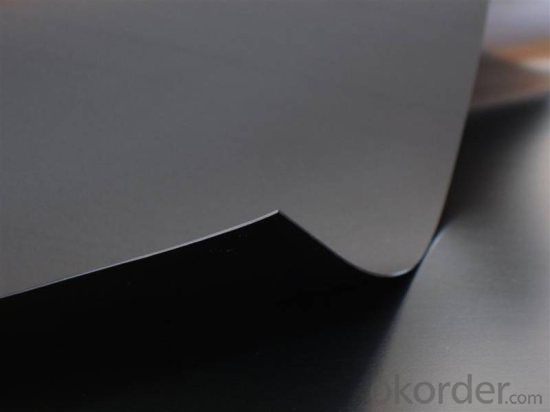- Understanding the Role of Geomembrane Liners in Waste Management
- Innovations in Geomembrane Liners for Water Management
- Geomembrane Liners: A Comprehensive Guide
- The Future of Geomembrane Liners in Civil Engineering
- Geomembrane Liners: Enhancing Landfill Stability
Manager:
WhatsApp:+86 177 0135 2670
Tel:+86 177 0135 2670
Email:marketing@okorder.com
Address:3rd Floor, No.2 Building, No.1 Sanlihe Road
HDPE Geomembranes in Canal Lining: Efficiency and Sustainability
hdpe Geomembranes, a type of synthetic material, have been increasingly utilized in the construction and maintenance of canals. These versatile membranes are known for their durability, flexibility, and impermeability, making them ideal for canal lining projects. In this article, we will explore the efficiency and sustainability of using HDPE geomembranes in canal lining, delving into their benefits, applications, and potential drawbacks.

The Wonders of HDPE Geomembranes
HDPE, or high-density polyethylene, is a polymer that has gained popularity in the engineering world due to its robustness and resistance to various environmental factors. When used as a geomembrane, HDPE offers a seamless, watertight barrier that prevents leakage and seepage in canal systems. This not only conserves water but also protects the surrounding soil and environment from potential contamination.
Efficiency in Action
One of the primary reasons for the widespread adoption of HDPE geomembranes is their efficiency. The installation process is relatively straightforward, involving the unrolling and joining of large sheets of the material to form a continuous lining. This minimizes the need for maintenance and reduces the risk of leaks, ensuring the long-term functionality of the canal. Additionally, HDPE's flexibility allows it to adapt to the canal's contours, providing a snug fit that further enhances its water retention capabilities.
Sustainability: A Greener Approach
Sustainability is a key consideration in modern engineering projects, and HDPE geomembranes contribute to this goal in several ways. Firstly, their longevity means that they require less frequent replacement, reducing the demand for new materials and the associated environmental impact. Secondly, the impermeable nature of HDPE helps in preserving water resources, a crucial aspect of sustainable development. Moreover, HDPE is a recyclable material, adding to its eco-friendliness.
Versatility in Applications
The applications of HDPE geomembranes extend beyond just canal lining. They are also used in landfills, reservoirs, and other water management projects. Their versatility lies in their ability to withstand a wide range of temperatures and resist chemical degradation, making them suitable for diverse environments.
The Human Touch
While the technical aspects of HDPE geomembranes are impressive, it's important to consider the human element in their deployment. The ease of installation not only benefits the environment but also the workers involved in the process. A safer and more efficient working environment can lead to higher job satisfaction and better overall project outcomes.
Potential Drawbacks and Solutions
Despite their numerous advantages, HDPE geomembranes are not without potential drawbacks. One concern is the initial cost, which can be higher than traditional lining materials. However, this is often offset by the long-term savings due to reduced maintenance and replacement needs. Additionally, concerns about the environmental impact of plastic materials can be mitigated through proper end-of-life management and recycling initiatives.
The Future of Canal Lining
As we look to the future, the role of HDPE geomembranes in canal lining is set to expand. With advancements in material science and construction techniques, we can expect even greater efficiency and sustainability from these membranes. The ongoing research and development in this field will undoubtedly lead to innovations that further enhance their performance and environmental compatibility.
Conclusion
In conclusion, HDPE geomembranes offer a highly efficient and sustainable solution for canal lining. Their durability, adaptability, and eco-friendly nature make them an attractive option for modern water management projects. While there are challenges to overcome, the benefits they provide are substantial, and with continued innovation, their role in canal lining is likely to grow. As we strive for a more sustainable future, embracing technologies like HDPE geomembranes is a step in the right direction.
- Previous:HDPE Geomembranes: A Cost-Effective Choice for Civil Engineering
- Next:The Science Behind HDPE Geomembranes






